mmcartalk
Expert
- Messages
- 4,155
- Reactions
- 2,675
Happy New Year: MM Retro-Write-Up: Hyundai Tiburon.

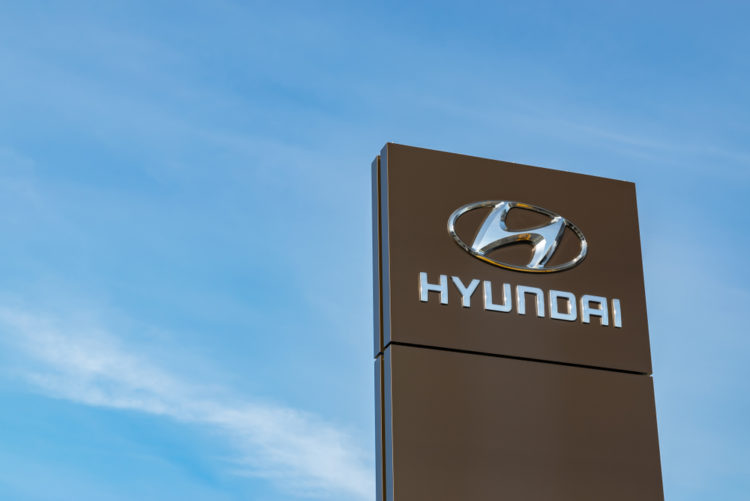
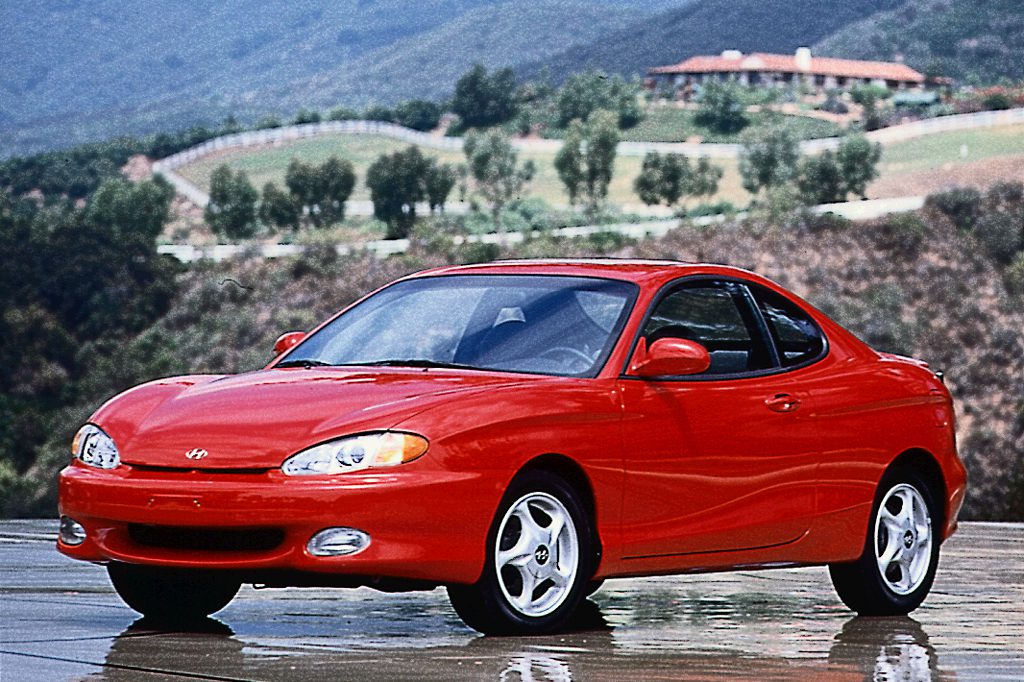
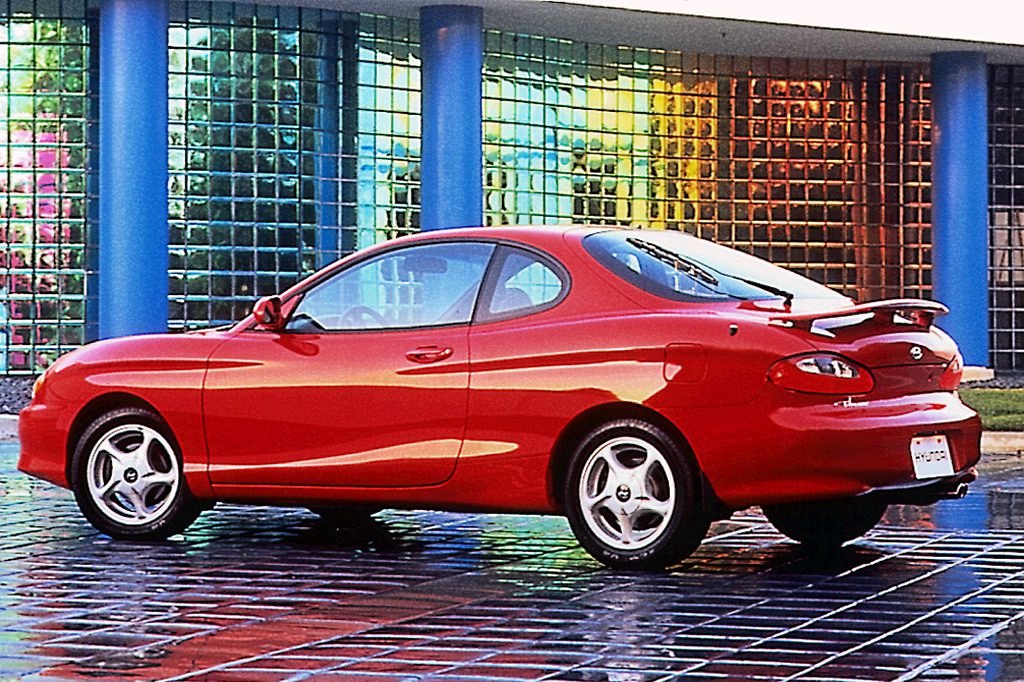


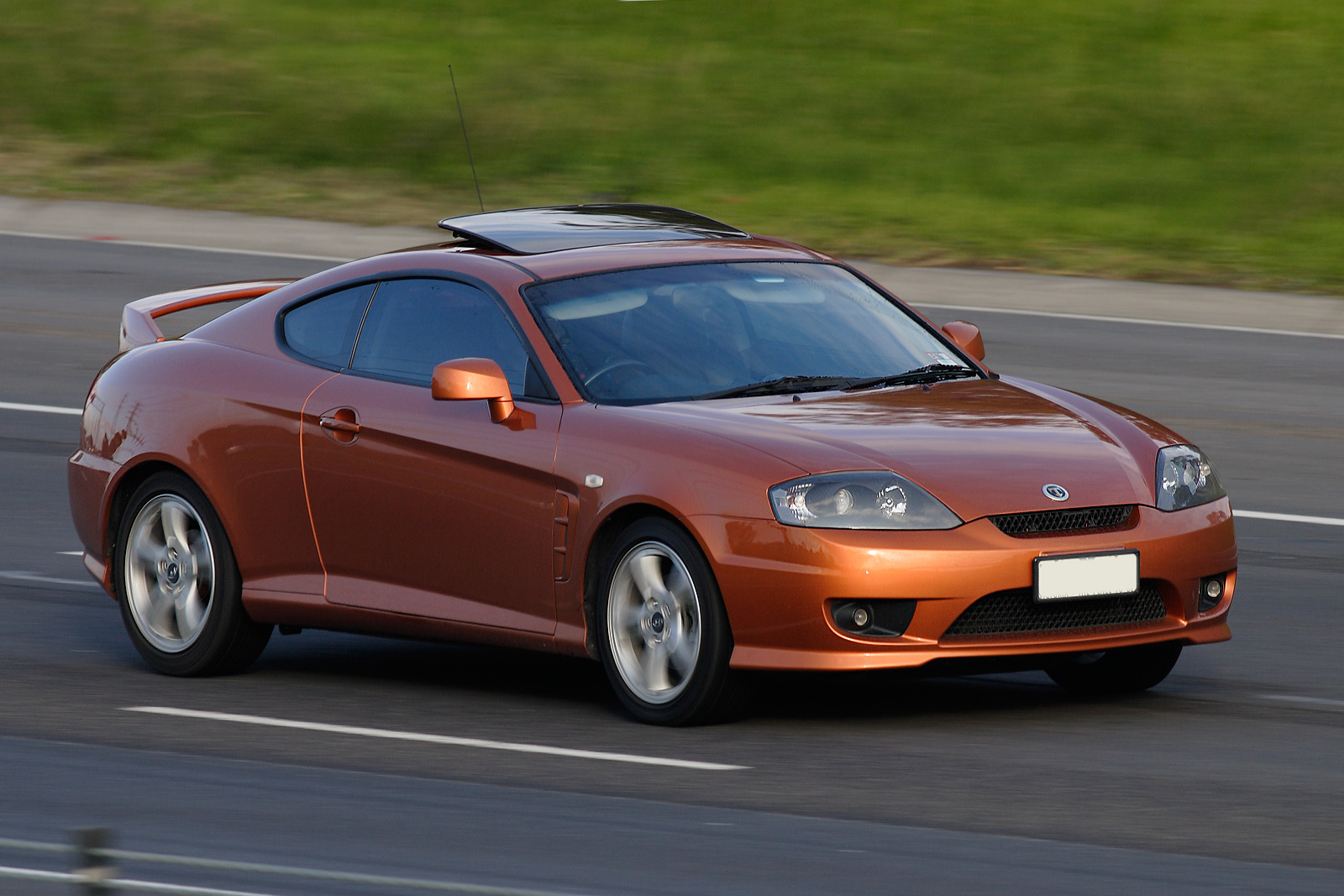
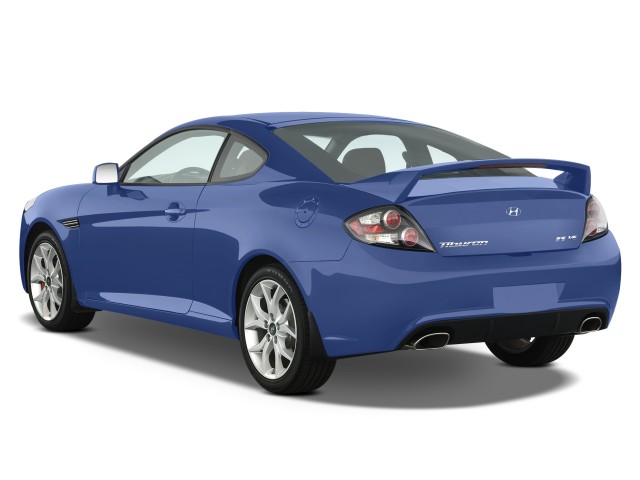
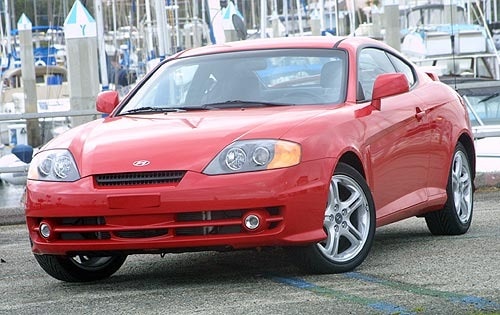
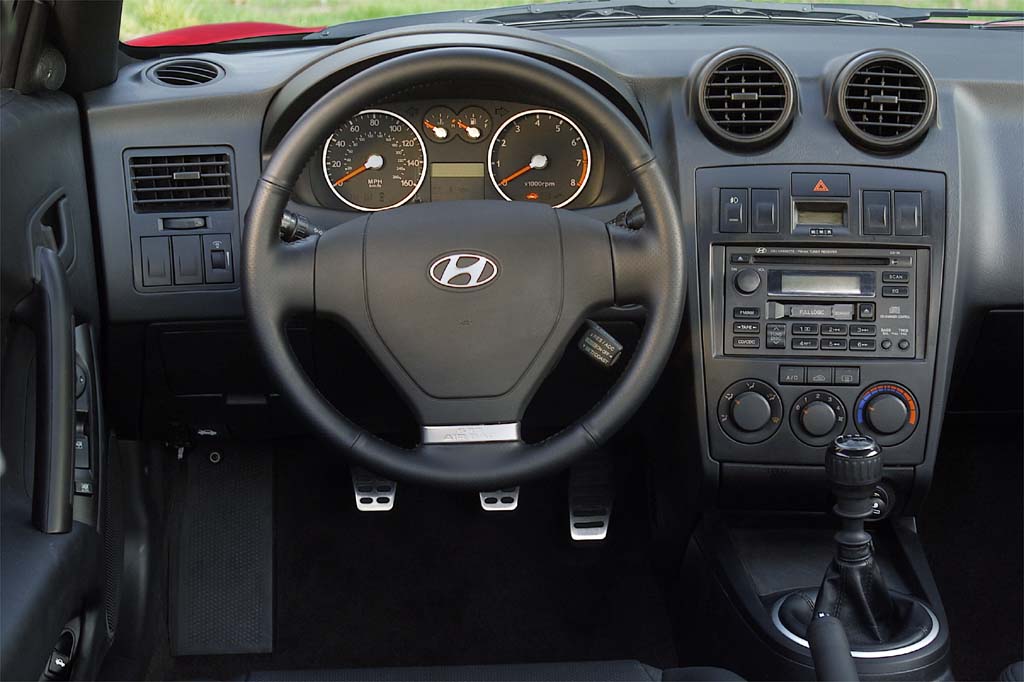

IN A NUTSHELL: Arguably the transition between the Age of Unacceptable Hyundais and Acceptable ones.
Happy New Year, Everyone.
For my first Retro-Write-Up in the new year (which, hopefully, and with prayer, will be a lot better year, for a lot more people, than 2020 was), I’m going to concentrate on a car that has been largely forgotten today, even though it wasn’t that long ago that it was discontinued. I’ve always thought that the Tiburon was not only one of Hyundai’s better efforts overall, but that the original 1997 version was a cornerstone in the company’s history….for reasons that I will explain below.
When the original Hyundai Excel subcompact was released in the U.S., in the fall of 1985 for the 1986 model year, its extremely low price ($4995 to start) attracted a lot of people, especially those who had been paying over list price for the privilege of taking home a new Japanese vehicle in that Age of Japanese import-restrictions, high demand, and short supply. The Excel’s sales figures multiplied rapidly…..to the point where, not long after it was introduced, it was the top-selling import (non-U.S.-nameplate) in the country.
But there was a reason why it cost so little. This was clearly not a Japanese-grade vehicle from Korea, although Mitsubishi marketed a version of it in the U.S. called the Precis….the two were virtually identical. as were the later 2-door Second-generation Precis and Hyundai Scoupe. In fact, as I understood it, for a while, Hyundai did not even use their own engines….they were supplied by Mitsubishi.
In those days before the Internet and Social-Media, the Excel’s shortcomings and engineering deficiencies became well-known as the number of them in customer hands multiplied. In the summer of 1987, I remember test-driving a white 3-speed-automatic 4-door Excel on a hot/humid day typical of D.C. summers. Though not as poorly-assembled as the ill-fated Pontiac Fiero I had sampled three years earlier (see my Fiero write-up), the Chevy Citation I had owned seven years earlier (see my Citation write-up), some of the FWD Chrysler products I had owned (see my Omni/Horizon write-up), or even a couple of BMWs I’ve sampled at far higher prices, this was clearly a second-rate vehicle. It drove and felt like a motorized cardboard box. Everything on it seemed to work, and nothing fell off, but just barely. Despite a unibody frame, the car had a somewhat loose feel to its construction, and, with the inefficient 3-speed automatic and some 68 HP, it was clearly underpowered, even allowing for the fact that, particularly in non-turbo engines, hot humid weather tends to sap engine-performance due to its lower air-density and leaner fuel mixtures. Especially with the A/C on, this car couldn’t even get out of its own way. I had to turn the A/C compressor off just to get up a mild hill in high gear without lugging or overstraining the engine….and downshifting didn’t add that much torque to the wheels. I had probably not sampled a car that sluggish since the notoriously lethargic 81-HP Cadillac Cimarron of 1982…a car that, even though I personally liked the looks of it, turned out to be a major embarrassment to Cadillac’s Management.
And,I wasn’t terribly impressed with the Hyundai products that followed the Excel’s introduction, nor with the larger Elantra and Sonata a few years later. The brand, along with Kia products, also from Korea, got a reputation for poor quality and engineering that lasted for years……Jay Leno, a classic auto-enthusiast, used to make it the butt of jokes on his Late-Night TV show. The brand, however, despite its reputation, managed to stay in business in the U.S. by appealing to many people who didn’t have a lot of money to spend on a new vehicle, college kids who needed something cheap and basic, people with poor credit who couldn’t qualify for bigger loans, or simply people who were unconcerned with what type of vehicle they drove or its brand-image.
Then, in the mid-90s, Hyundai got new management that had the foresight to look beyond the fact that they were managing to stay in business by selling only to people who couldn’t (or wouldn’t) buy better products. Toyota and Honda, at this time, quality-wise, were probably at or near their peak, and the rest of the industry was starting to attempt to improve their own quality as well. The people running Hyundai made a commitment (which they were to keep) that, regardless of what it took, they would make better products.
And, yes, they did. In my opinion (and I sampled a lot of cars back then), the all-new 1997 Tiburon sports-coupe was the first concrete evidence of that. Tiburon is the Spanish word for “Shark”, and, while it was not the type of aggressive vehicle that one could link to a predatory animal like a shark, it opened up a new chapter in how Hyundai vehicles were designed and built. Though not completely without rattles/squeaks, and not as tightly-built as the 1995 Toyota Celica I was driving at the time (yes, the same-generation Celica that Scotty Kilmer likes to rave about in his videos LOL), the new Tiburon showed a reasonably good level of quality-control, material quality inside, sensible design, and fit/finish. A mid-generation face-lift in 1999 gave it a new front end with a four-headlight effect, although somewhat more awkward-looking than the more symmetrical four-round-headlight effect on the Celica and Acura Integra. The speedometer got a new oval housing, and some interesting body colors were offered….I liked the light yellow/pastel, which had a less-intense effect than the typical bright-yellows seen on some sports cars of the period. The Tiburon used the Elantra’s FWD platform, and came with in-line fours of from 111 to 140 HP, which was comparable with the power levels of most of its competition…and, of course, sold at a markedly lower price. When I first sampled the 1999 version, I thought…”Here’s a Hyundai product I could actually spend my hard-earned money on”.
The First-Generation Tiburon’s reliability record, from what I remember in Consumer Reports, verified what I had sampled at the dealership and on a test-drive…it was significantly better than previous Hyundais had been, and subsequent vehicles from Hyundai also improved significantly…I saw some noted improvements in the next-generation Sonata and other Hyundai products. By the mid-2000s. IMO (and I’m quite serious about this), they were actually showing some signs of better quality than some Japanese brands….a couple of Japanese brands had started to slip noticeably, due to cost-cutting and cheaper materials. i was still working full-time, and the President of our Federal Employee Union-Local asked me for some car-buying advice…he had an old unreliable Chevrolet Impala (the Impala’s design improved tremendously with the 2014 version, but previous ones were junk/rental-grade), and he wanted a new sedan that was better-built and more reliable. I suggested he check out the latest Hyundai Sonata, as I had been very impressed with it, and, like all Hyundais/Kias, it was now carrying a new 10/100 drivetrain and 5/60 Bumper-to-Bumper warranty. So, one day, after work, we went to Fitzgerald Hyundai/Subaru in Rockville, MD…..I also liked the “Fitz Way” (unusual at the time) that that line of dealerships did business, with a healthy discount off list price and a choice of two No-Haggle-prices, depending on how much free-service/maintenance you got. The salespeople didn’t pressure you…they let you look at your own pace, and, if and when you were ready to deal, treated you courteously.
Well, he test-drove a new 5th-generation Sonata (if I remember, it was a 2005 or 2006), and loved it….he signed the deal, and came back the next day and picked it up. To this day, like with the 3rd-Generation Toyota Camry of the 1990s and the 4th-Generation Lexus ES300/330 of the early 2000s, I think that was (and remains) the best Sonata ever done. I’m not impressed with the latest 2021 Sonata at all, which, IMO, shows marked material cost-cutting, particularly inside.
Anyhow, enough of Sonatas…back to the Tiburon. Although the people at Hyundai had reason to take some pride in the job that they had done with the first-generation Tiburon (and in the mid-cycle facelift) an all new, MUCH better Second-Generation model was introduced, which, in the U.S., was in production from the 2003 to 2008 model years. This car, IMO, was a gem…I liked it so much I seriously considered buying one, as it was quite reasonably-priced. It used excellent materials inside and out, had as good a fit/finish as anything I had seen at that price, drove quite pleasantly, and avoided the somewhat awkward look of the First-Generation model. I got to sample them, not only from the usual dealer test-drive, but also with a co-worker of mine, who I had been personal friends with for some time. He had a bright-red one/black-interior with the five-speed manual transmission and (as I recall, but not totally sure), the optional V6 of 172 HP. The well-designed clutch and transmission-linkage operated just like clockwork, the suspension was well-tuned for a good compromise between ride and handling (by sport-coupe standards), especially considering that it kept the Elantra-sourced FWD platform that was also used for several other Hyundai and Kia vehicles. I drove his red one a number of times when he and his daughter was moving from one house in the D.C. area to another (he moved several times in the period I worked with him, partially due to divorces). We used it to carry the small stuff in his house that didn’t need to go into the moving-truck. He’s since moved to West-Virginia…and now driving Subarus in the snowy West-Virginia climate. Every time I drove his red Second-generation Tiburon, I couldn’t help but think back to 1987, and that first Hyundai Excel test-drive, and marvel at the difference….it was like two different worlds.
Of course, all human-sourced good things come to an end, and the Tiburon was no exception. As with other small sports-coupes, sales steadily declined as the public started to shift to crossovers….in Hyundai’s case, to the Tucson/Santa-Fe and closely-related Kia Sportage/Soul (Hyundai had bought Kia, which was now a Hyundai division). After the 2008 model year, the Hyundai planners determined that not enough Tiburons were being sold to keep the car in production in the U.S. I cannot prove it by simple speech, and, of course, the public sales-shift to crossovers was unmistakable, but, IMO, part of the Tiburon’s sales-problem in the U.S. was due to the simple fact that a lot of people still had blinders over their eyes back then (and some still do today in 2020) about the quality of Hyundai and Kia products. They essentially live with their minds living back in the low-quality days of the 1980s and 1990s, when that was clearly no longer the case, and a different Hyundai/Kia, as of the first Tiburons, was now producing far better vehicles. Automotive ignorance with the public was, and remains, a sad fact.
As Always, Happy Car-Memories….and, again, Happy New Year.
MM
__________________

DRIVING IS BELIEVING












IN A NUTSHELL: Arguably the transition between the Age of Unacceptable Hyundais and Acceptable ones.
Happy New Year, Everyone.
For my first Retro-Write-Up in the new year (which, hopefully, and with prayer, will be a lot better year, for a lot more people, than 2020 was), I’m going to concentrate on a car that has been largely forgotten today, even though it wasn’t that long ago that it was discontinued. I’ve always thought that the Tiburon was not only one of Hyundai’s better efforts overall, but that the original 1997 version was a cornerstone in the company’s history….for reasons that I will explain below.
When the original Hyundai Excel subcompact was released in the U.S., in the fall of 1985 for the 1986 model year, its extremely low price ($4995 to start) attracted a lot of people, especially those who had been paying over list price for the privilege of taking home a new Japanese vehicle in that Age of Japanese import-restrictions, high demand, and short supply. The Excel’s sales figures multiplied rapidly…..to the point where, not long after it was introduced, it was the top-selling import (non-U.S.-nameplate) in the country.
But there was a reason why it cost so little. This was clearly not a Japanese-grade vehicle from Korea, although Mitsubishi marketed a version of it in the U.S. called the Precis….the two were virtually identical. as were the later 2-door Second-generation Precis and Hyundai Scoupe. In fact, as I understood it, for a while, Hyundai did not even use their own engines….they were supplied by Mitsubishi.
In those days before the Internet and Social-Media, the Excel’s shortcomings and engineering deficiencies became well-known as the number of them in customer hands multiplied. In the summer of 1987, I remember test-driving a white 3-speed-automatic 4-door Excel on a hot/humid day typical of D.C. summers. Though not as poorly-assembled as the ill-fated Pontiac Fiero I had sampled three years earlier (see my Fiero write-up), the Chevy Citation I had owned seven years earlier (see my Citation write-up), some of the FWD Chrysler products I had owned (see my Omni/Horizon write-up), or even a couple of BMWs I’ve sampled at far higher prices, this was clearly a second-rate vehicle. It drove and felt like a motorized cardboard box. Everything on it seemed to work, and nothing fell off, but just barely. Despite a unibody frame, the car had a somewhat loose feel to its construction, and, with the inefficient 3-speed automatic and some 68 HP, it was clearly underpowered, even allowing for the fact that, particularly in non-turbo engines, hot humid weather tends to sap engine-performance due to its lower air-density and leaner fuel mixtures. Especially with the A/C on, this car couldn’t even get out of its own way. I had to turn the A/C compressor off just to get up a mild hill in high gear without lugging or overstraining the engine….and downshifting didn’t add that much torque to the wheels. I had probably not sampled a car that sluggish since the notoriously lethargic 81-HP Cadillac Cimarron of 1982…a car that, even though I personally liked the looks of it, turned out to be a major embarrassment to Cadillac’s Management.
And,I wasn’t terribly impressed with the Hyundai products that followed the Excel’s introduction, nor with the larger Elantra and Sonata a few years later. The brand, along with Kia products, also from Korea, got a reputation for poor quality and engineering that lasted for years……Jay Leno, a classic auto-enthusiast, used to make it the butt of jokes on his Late-Night TV show. The brand, however, despite its reputation, managed to stay in business in the U.S. by appealing to many people who didn’t have a lot of money to spend on a new vehicle, college kids who needed something cheap and basic, people with poor credit who couldn’t qualify for bigger loans, or simply people who were unconcerned with what type of vehicle they drove or its brand-image.
Then, in the mid-90s, Hyundai got new management that had the foresight to look beyond the fact that they were managing to stay in business by selling only to people who couldn’t (or wouldn’t) buy better products. Toyota and Honda, at this time, quality-wise, were probably at or near their peak, and the rest of the industry was starting to attempt to improve their own quality as well. The people running Hyundai made a commitment (which they were to keep) that, regardless of what it took, they would make better products.
And, yes, they did. In my opinion (and I sampled a lot of cars back then), the all-new 1997 Tiburon sports-coupe was the first concrete evidence of that. Tiburon is the Spanish word for “Shark”, and, while it was not the type of aggressive vehicle that one could link to a predatory animal like a shark, it opened up a new chapter in how Hyundai vehicles were designed and built. Though not completely without rattles/squeaks, and not as tightly-built as the 1995 Toyota Celica I was driving at the time (yes, the same-generation Celica that Scotty Kilmer likes to rave about in his videos LOL), the new Tiburon showed a reasonably good level of quality-control, material quality inside, sensible design, and fit/finish. A mid-generation face-lift in 1999 gave it a new front end with a four-headlight effect, although somewhat more awkward-looking than the more symmetrical four-round-headlight effect on the Celica and Acura Integra. The speedometer got a new oval housing, and some interesting body colors were offered….I liked the light yellow/pastel, which had a less-intense effect than the typical bright-yellows seen on some sports cars of the period. The Tiburon used the Elantra’s FWD platform, and came with in-line fours of from 111 to 140 HP, which was comparable with the power levels of most of its competition…and, of course, sold at a markedly lower price. When I first sampled the 1999 version, I thought…”Here’s a Hyundai product I could actually spend my hard-earned money on”.
The First-Generation Tiburon’s reliability record, from what I remember in Consumer Reports, verified what I had sampled at the dealership and on a test-drive…it was significantly better than previous Hyundais had been, and subsequent vehicles from Hyundai also improved significantly…I saw some noted improvements in the next-generation Sonata and other Hyundai products. By the mid-2000s. IMO (and I’m quite serious about this), they were actually showing some signs of better quality than some Japanese brands….a couple of Japanese brands had started to slip noticeably, due to cost-cutting and cheaper materials. i was still working full-time, and the President of our Federal Employee Union-Local asked me for some car-buying advice…he had an old unreliable Chevrolet Impala (the Impala’s design improved tremendously with the 2014 version, but previous ones were junk/rental-grade), and he wanted a new sedan that was better-built and more reliable. I suggested he check out the latest Hyundai Sonata, as I had been very impressed with it, and, like all Hyundais/Kias, it was now carrying a new 10/100 drivetrain and 5/60 Bumper-to-Bumper warranty. So, one day, after work, we went to Fitzgerald Hyundai/Subaru in Rockville, MD…..I also liked the “Fitz Way” (unusual at the time) that that line of dealerships did business, with a healthy discount off list price and a choice of two No-Haggle-prices, depending on how much free-service/maintenance you got. The salespeople didn’t pressure you…they let you look at your own pace, and, if and when you were ready to deal, treated you courteously.
Well, he test-drove a new 5th-generation Sonata (if I remember, it was a 2005 or 2006), and loved it….he signed the deal, and came back the next day and picked it up. To this day, like with the 3rd-Generation Toyota Camry of the 1990s and the 4th-Generation Lexus ES300/330 of the early 2000s, I think that was (and remains) the best Sonata ever done. I’m not impressed with the latest 2021 Sonata at all, which, IMO, shows marked material cost-cutting, particularly inside.
Anyhow, enough of Sonatas…back to the Tiburon. Although the people at Hyundai had reason to take some pride in the job that they had done with the first-generation Tiburon (and in the mid-cycle facelift) an all new, MUCH better Second-Generation model was introduced, which, in the U.S., was in production from the 2003 to 2008 model years. This car, IMO, was a gem…I liked it so much I seriously considered buying one, as it was quite reasonably-priced. It used excellent materials inside and out, had as good a fit/finish as anything I had seen at that price, drove quite pleasantly, and avoided the somewhat awkward look of the First-Generation model. I got to sample them, not only from the usual dealer test-drive, but also with a co-worker of mine, who I had been personal friends with for some time. He had a bright-red one/black-interior with the five-speed manual transmission and (as I recall, but not totally sure), the optional V6 of 172 HP. The well-designed clutch and transmission-linkage operated just like clockwork, the suspension was well-tuned for a good compromise between ride and handling (by sport-coupe standards), especially considering that it kept the Elantra-sourced FWD platform that was also used for several other Hyundai and Kia vehicles. I drove his red one a number of times when he and his daughter was moving from one house in the D.C. area to another (he moved several times in the period I worked with him, partially due to divorces). We used it to carry the small stuff in his house that didn’t need to go into the moving-truck. He’s since moved to West-Virginia…and now driving Subarus in the snowy West-Virginia climate. Every time I drove his red Second-generation Tiburon, I couldn’t help but think back to 1987, and that first Hyundai Excel test-drive, and marvel at the difference….it was like two different worlds.
Of course, all human-sourced good things come to an end, and the Tiburon was no exception. As with other small sports-coupes, sales steadily declined as the public started to shift to crossovers….in Hyundai’s case, to the Tucson/Santa-Fe and closely-related Kia Sportage/Soul (Hyundai had bought Kia, which was now a Hyundai division). After the 2008 model year, the Hyundai planners determined that not enough Tiburons were being sold to keep the car in production in the U.S. I cannot prove it by simple speech, and, of course, the public sales-shift to crossovers was unmistakable, but, IMO, part of the Tiburon’s sales-problem in the U.S. was due to the simple fact that a lot of people still had blinders over their eyes back then (and some still do today in 2020) about the quality of Hyundai and Kia products. They essentially live with their minds living back in the low-quality days of the 1980s and 1990s, when that was clearly no longer the case, and a different Hyundai/Kia, as of the first Tiburons, was now producing far better vehicles. Automotive ignorance with the public was, and remains, a sad fact.
As Always, Happy Car-Memories….and, again, Happy New Year.
MM
__________________

DRIVING IS BELIEVING

